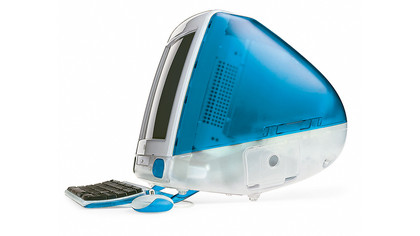Why there's never been a better time for Mac design
We take an in-depth look at the Mac's recent breakthroughs, and find out what they mean for you
Could Apple once again be skating to where the puck is going to be, successfully predicting future trends as it did when it dropped the floppy drive from the original iMac back in 1998?
Frankly, we have our doubts. The floppy disk was a very limited storage medium. Optical storage is far more versatile. You might not get your software physically delivered on a disk any more, but do you still rip CDs to iTunes? Or watch DVD movies on your iMac? Or make your own DVD video disks? We suspect sales of USB SuperDrives will increase with the arrival of the new iMac.

Previous generations of iMac and Mac mini gave us hard drives as standard, and solid-state drives as configuration options. The new Macs give us a third choice: buy any iMac except the entry-level model or the more expensive of the two Mac minis from the online Apple Store, and you can choose a new Fusion Drive.
The Fusion Drive combines 128GB of solid-state storage with a 1TB or 3TB hard drive, with the 3TB model only available in 27-inch iMacs. By storing the operating system, regularly used applications and commonly accessed files on the flash section of the drive and everything else on the hard drive platters, a Fusion Drive gives near-SSD speeds without compromising on storage capacity.
According to Apple, a Fusion Drive is around three and a half times as speedy as a regular hard drive. The solid-state storage section is not a cache. The Fusion Drive doesn't create copies of regularly used files on the SSD. Nor is it a RAID drive. Instead, it's a hybrid drive that appears as one volume in the Finder, with a capacity of 1.12TB for the 1TB version (a 1TB hard drive plus 128GB of solid-state storage), or 3.12TB for the 3TB drive.
Likewise, if you back up your Fusion Drive, it's treated as a single volume rather than two separate units. The drive itself deals with file management, opting to put frequently accessed data on the solid-state portion, and moving files you no longer regularly use back to the hard drive.
According to Apple, 'You'll enjoy shorter boot times, and as the system learns how you work, you'll experience faster application launches and quicker file access'. There have been hybrid drives before, of course, most notably Seagate's Momentus XT. But Fusion Drive is different. Because it's made by Apple it can integrate directly with OS X, and Seagate's hybrid solution offers up to 8GB of solid-state storage, not the 128GB enjoyed by the Fusion Drive.
Sign up for breaking news, reviews, opinion, top tech deals, and more.
And as regular readers know, we've tested the Momentus XT and were extremely impressed with its performance. Could Apple's Fusion Drive prove quicker still? We certainly look forward to finding out. The new Fusion Drive looks like it will prove a real boon for your desktop Mac, let's hope it also comes to notebooks soon.